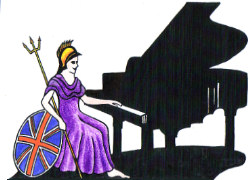Teachers, Accompanists and Piano Entertainers in the UK

UK Piano Page

Browse Locations Wales/Cymru » Monmouthshire » Chepstow
ROGIET
CALDICOT
Chepstow, Monmouthshire NP26 3UG
Wales/Cymru
A practicing jazz educator, composer and performer with 35 years experience. His teaching practice was set up parallel with his performing career - a ...
122A Horsham La
Upchurch
Gillingham, Kent ME87XB
England
Main agents for Steinmayer, Weber and Gors &
Unit 15 Wroslyn Road Industrial Estate
Wroslyn Road
Freeland, Oxfordshire OX29 8HZ
England
Buying a piano is a big investment – financially
Unit 14a, Granary Business Centre
Broad Farm, North Street
Hailsham, West Sussex BN27 4DU
England
Located in the Sussex countryside, we are a family
Unit 60 The Triangle
Wolverton Park
Milton Keynes, Buckinghamshire MK125FJ
England
We are a family run music shop in Wolverton,
121-125 Royal Avenue
Belfast, County Antrim BT1 1FF
Northern Ireland
The Belfast music scene has been quietly turning
Music Festival for performers and guests Our 10th
18-06-2022 12:30PM
The Morecambe Bay Piano Group was set up to extend
11-12-2021 01:00PM
The Morecambe Bay Piano Group was set up to extend
08-01-2022 01:00PM
The Morecambe Bay Piano Group was set up to extend
12-02-2022 01:00PM